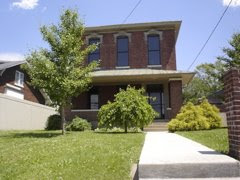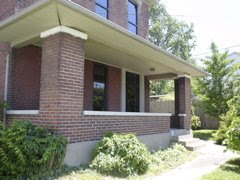
On February 12, 1998, seventeen-year-old Rod Ferrell pled guilty to killing a Eustis, Florida couple with a crowbar. The leader of a teenage vampire cult, Ferrell was allegedly helped in the double slaying by his then-girlfriend, Charity Lynn Keesee, and two other members of the cult.
The victims, Richard Wendorf and Naoma Queen, were the parents of Heather Wendorf, a friend of Ferrell's, and were beaten to death in their home on November 25, 1996.
The road to the murders began some three days earlier, on November 22. Late that night or early in the morning of the 23rd, Ferrell -- along with Keesee and the two cult members, Howard Scott Anderson and Dana Cooper -- left his hometown of Murray, Kentucky to drive down to Eustis.
After the four arrived in Eustis, Ferrell, who had lived there for several years before moving back to Murray to live with his mother, tracked down Wendorf and told another acquaintance, Audrey Presson, that he was in town for unfinished business.
A Disturbing Upbringing
When Ferrell was born on March 28, 1980, his mother, Sondra Gibson was only 17 years old, and his father, Rick Ferrell, was also a teen. The two were married nine days after baby Rod was born, but split up weeks afterwards.
Rick Ferrell filed for a divorce and joined the military, while Sondra kept the child. Her parents also looked after Rod, who claimed Sondra's father -- his grandfather -- raped him when he was 5.
Rod also claimed that as a young child, he was exposed to occult rituals and human sacrifices, and was introduced to the "Dungeons & Dragons" role-playing game.
Sondra Gibson eventually remarried and moved frequently with Rod before leaving him in Murray, Kentucky and moving with her new husband to Michigan. He allegedly told Rod that they were never coming back, and Gibson apparently became so upset that she divorced him and moved back to Murray to be with Rod. (Her second husband also allegedly engaged in satanic rituals.)
Around this time, Rod began to undergo some sort of transformation. He walked in cemeteries at night, cut himself so others could drink his blood, and told people he was a 500-year-old vampire named "Vesago." His school work slipped and he began flagrantly disobeying his schools' policies, skipping class, smoking on campus and generally defying teachers and school officials. He also indulged in playing "Vampire: The Masquerade," a realistic role-playing game in which players act out vampiric scenarios in real-time.
His mother allowed him to stay out all night, use drugs, and skip school, and he frequently spent time with a young man named Stephen Murray, who brought the teenage Ferrell into the vampire world and "crossed him over," turning him into a presumptive vampire and giving him his name.
By the spring of 1996, Rod was also talking long-distance to Heather Wendorf, who apparently told Rod that her parents were hurting her and that she wanted him to come get her, but that he would have to kill them to do so.
In September 1996, Murphy attacked Ferrell, who refused treatment when taken to a local hospital. Murphy was convicted for the attack. Shortly after, Sondra Gibson was charged with soliciting a minor -- Murphy's 14-year-old brother -- whom Gibson wrote love letters, imploring him to "cross her over" and have her as his vampire bride.
"Vesago" Attacks
On November 25, the day of the murders, Ferrell and his companions were stopped by law enforcement officers and questioned because their vehicle had a flat tire. The flat caused Ferrell to change his plans. He told Wendorf and another friend, Jeanine LeClaire, about this and allegedly discussed with the group a plan to kill Wendorf's parents and take their Ford Explorer to use as a getaway vehicle.
Ferrell and friends arrived near the Wendorf home and met Heather Wendorf down the road from her house. He sent the three young women -- Heather Wendorf, Cooper and Keesee -- to visit Heather's boyfriend and pick up LeClaire. Ferrell and Anderson stayed behind, armed with clubs.
The two young men searched the outside of the Wendorf home, looking for some way to get inside. They entered through an unlocked door to the garage and searched the garage for better weapons. Ferrell finally settled on a crowbar.
Ferrell and Anderson then went inside the house, yanked one phone from the wall, and came upon 49-year-old Richard Wendorf, asleep on the couch. Ferrell beat him several times with the crowbar, fracturing his skull and giving him numerous chest wounds, including fractured ribs.
As Richard Wendorf lay dying, Naoma Queen left a bathroom in the house and entered the kitchen, where she found Ferrell. Ferrell had blood on his clothes and the crowbar in his hands. Queen threw hot coffee on him and fought him, but Ferrell beat her down to the floor and bashed her head with the crowbar several times.
With Heather's parents dead, the two young men searched the house. They took a Discover card from Richard Wendorf's pocket and the keys to the Explorer, which they drove off in.
They soon met the girls, who were returning to the area near the Wendorf home in the Buick Skyhawk they had originally used to drive down from Kentucky. The group then used both vehicles to drive to nearby Sanford, where they dumped the Buick. They switched the license plates, so that the Explorer had the Buick's plates (and the Buick, now left behind, had the plates of the stolen Explorer).
The group of five -- Ferrell, Anderson, Keesee, Cooper and Heather Wendorf -- drove west along Interstate 10 through Tallahassee and towards New Orleans, presumably to meet famed vampire writer Anne Rice. They stopped in Crestview, Florida and bought gas and a knife using Richard Wendorf's stolen Discover card.
One of the five made a call from Baton Rouge to Charity Keesee's family, and soon after, the five were caught. Ferrell was videotaped making two slightly different confessions, and four of the suspects -- the two guys, Dana Cooper and Heather Wendorf -- were charged with murder. Keesee was charged with being an accessory after the fact. A grand jury indicted Ferrell and Anderson on December 17, 1996 but refused to indict Heather Wendorf.
The Trial and Sentencing
The trial against Ferrell began on February 12, 1998. As the state offered its opening arguments, Ferrell pled guilty to the four charges against him: armed burglary, armed robbery, and two counts of first-degree murder. The jury empanelled for his trial was then given the task of determining if Ferrell should be given life in prison or death in Florida's electric chair.
Ferrell's lawyers argued that his young age should be a mitigating factor in his sentence, as well as his emotional age, which a psychiatrist placed at three years of age and his extreme emotional and mental disturbance.
On February 23, the jury voted unanimously to give Ferrell the death sentence. After additional testimony from both sides, Judge Jerry Lockett accepted the jury recommendation four days later and sentenced Ferrell to the electric chair. He is now the youngest person in Florida to sit on death row.
After the sentencing, Judge Lockett also urged prosecutors to charge Heather Wendorf, pointing to unanswered questions about her parents' death and saying, "There is genuine evil in this world." Ferrell's mother, Sondra Gibson, said she felt her son did not deserve the death penalty, but endorsed the judge's suggestion about Wendorf.
"There's one person walking around who's just as guilty as he is," she said.











